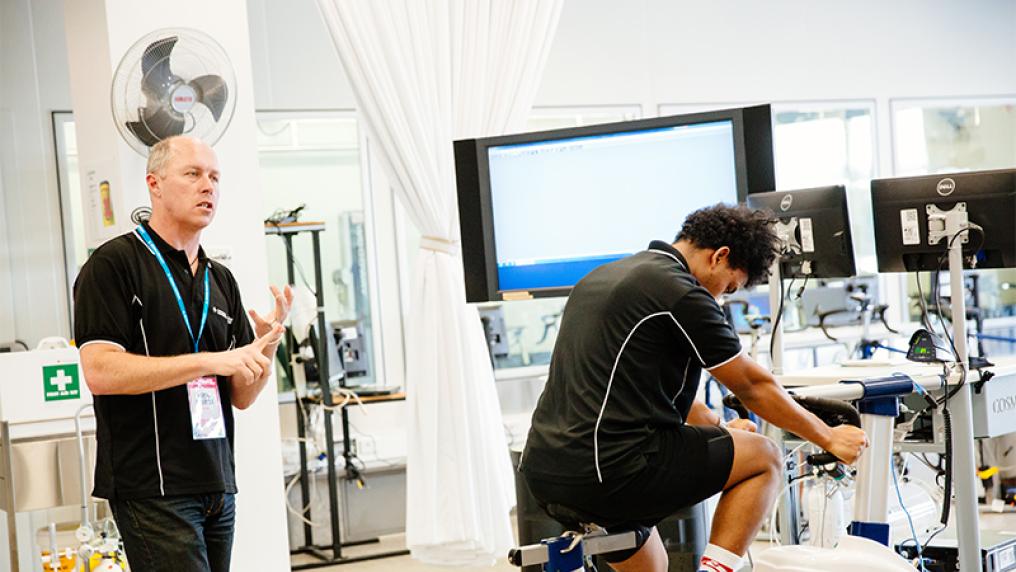Inside the black box of the VU Block Model

The VU Block Model structure improves student retention and pass rates, especially for those from disadvantaged backgrounds a new study (PDF, 882.7 KB) released today from Victoria University has found.
The research, funded by the National Centre for Student Equity in Higher Education (NCSEHE), investigated the experience of the VU Block Model for first year students studying science, technology, engineering and mathematics (STEM) subjects at Victoria University.
The report said that the new model of teaching led to a 41% reduction in first-year students who failed STEM subjects; however, the improvements were even higher for students from non-English speaking and low SES backgrounds, with fail grades reducing by 45.6% and 46.4% respectively.
Victoria University is the first Australian university to implement a block model style of delivery which involves students studying one subject at a time in intensive four week blocks and learning in small highly interactive classes. The success of the model for first year students has led to the university expanding it to all its students.
Summary of key findings
The quantitative analysis demonstrated two facets of the Block Model’s success:
The unit failure rate among all students declined by 9.2 percentage points between the most recent pre-Block (2017) and post-Block (2019) cohorts, with the equity students’ fail rate declining by 9.8 percentage points over this time.
General student satisfaction with first year STEM units also improved, as survey items relating to teaching quality showing a steady improvement from 2016 to 2019, with the only survey item showing a decline for equity students relating to the perception that unit workload was manageable.
The qualitative analysis of the Block Model’s impact
The Block Model is informed by a rigorous base of theory, evidence and reflection: The Block Model is based on similar models from North America and was adapted to VU’s context in consultation with staff and drawing on equity-focused research.
The Block Model is situated in a supportive organisational context: The establishment of a separate, interdisciplinary First Year College (FYC) at VU is widely seen as critical to the Block Model’s success, with the challenge now to extend this success.
The Block Model prioritises strong relationships that enhance teaching and learning: Improved relationships between academics and students was a strong theme in interviews, facilitated by smaller classes and intensive engagement.
The Block Model is being implemented by expert higher education practitioners: FYC academics were selected because of their passion for teaching first-year students, and deliberately organised into a community of practice. This activated existing teaching expertise and established a space in which expertise is developed.
The Block Model enables time to be used more effectively for learning: Students and academics emphasised the benefits of focusing on one subject at a time, with many students saying this had reduced their anxiety about study. The intensity of the Block also necessitates well-planned pre-class activities, scaffolded assessments, and a constant pace of learning. However, the rapid pace of teaching was demanding for many students and staff.
The Block Model involves engaging curriculum that builds skills for learning: The Block Model required all units to be redesigned. Most STEM subjects have been successfully transformed to offer more action learning and engagement, and all are undergoing continual revision and renewal.
The Block Model enables learning progress to be more actively monitored: Students reported increased confidence after obtaining results for their first Block. Innovative, regular assessment and feedback— underpinned by better data use by staff—enables students to demonstrate knowledge in diverse ways, although some challenges remain in calibrating assessment.
Summary of recommendations
VU’s introduction of Block Model shows that innovation in teaching equity students is achievable but that it involves considerable complexity. VU’s experience of the Block offers insights into how other institutions can manage complexity in their own innovations.
For policymakers, the Block Model shows the importance of regulatory environments that actively support innovation, especially as financial necessity generates more institutional experimentation. It also reaffirms that a quality focus in teaching and active learning can improve student engagement and skill acquisition, especially for equity group students.



